Product launch announcement email
Big news deserves big impact. When executed with the right story arc, launch emails can drive up to 30 % of first-week sign-ups and spark a wave of social shares (Source: Appcues 2024 benchmark).
This template gives you a teaser-to-launch playbook: narrative beats that build tension, FOMO tactics that convert, and timing cues that fit both Product Hunt drops and quiet feature roll-outs.
10 Stunning Mockups of Product launch announcement email template
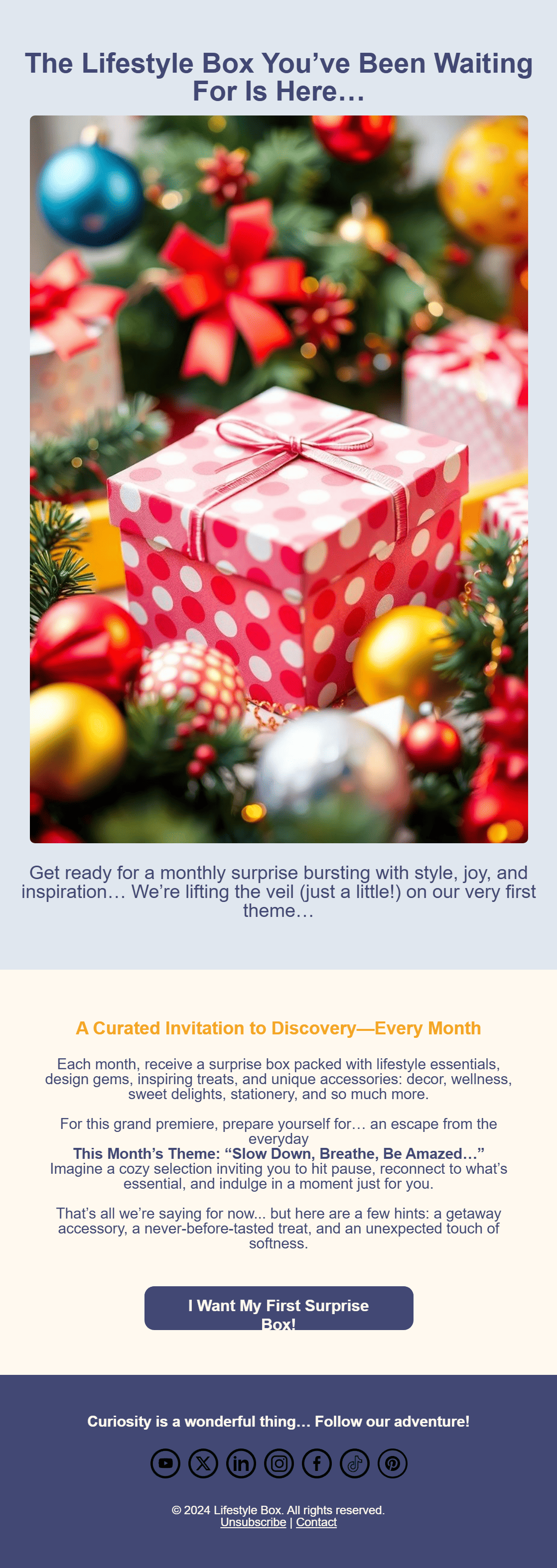

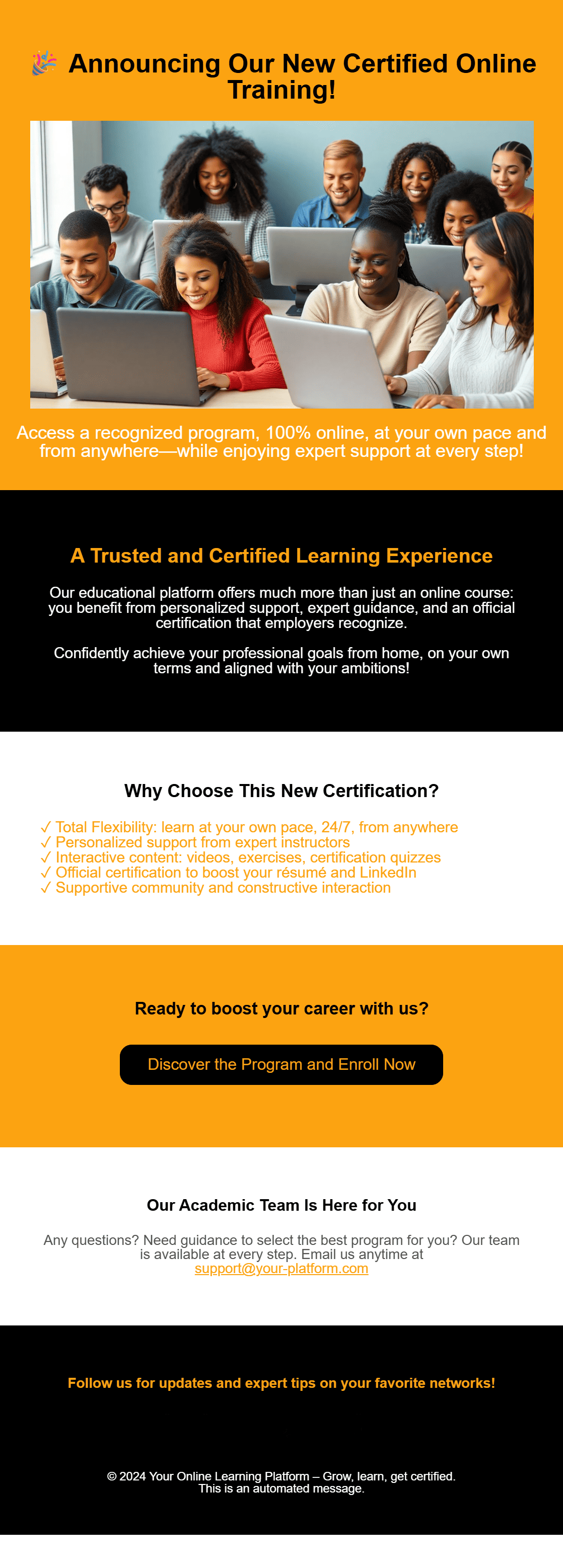
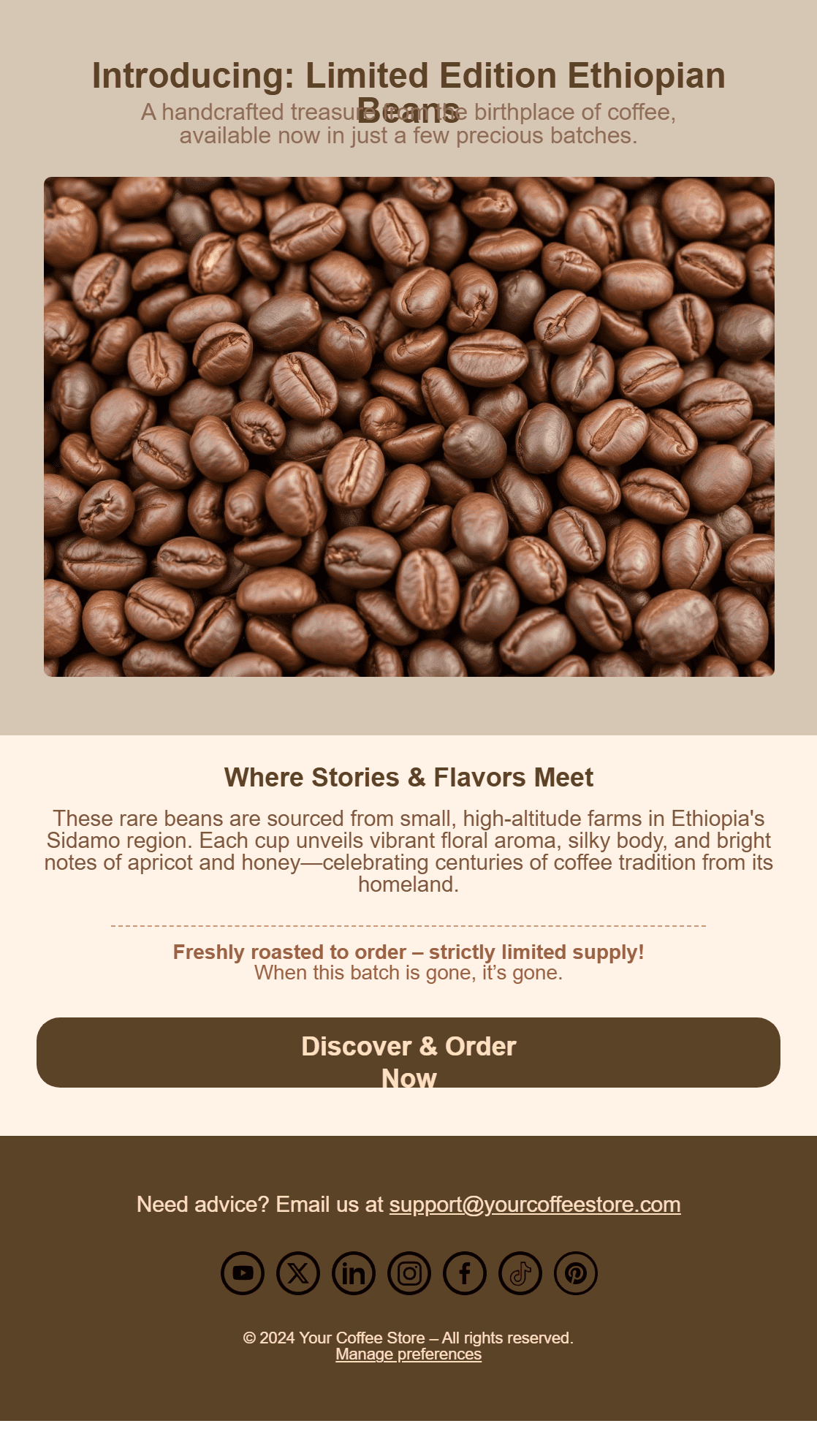
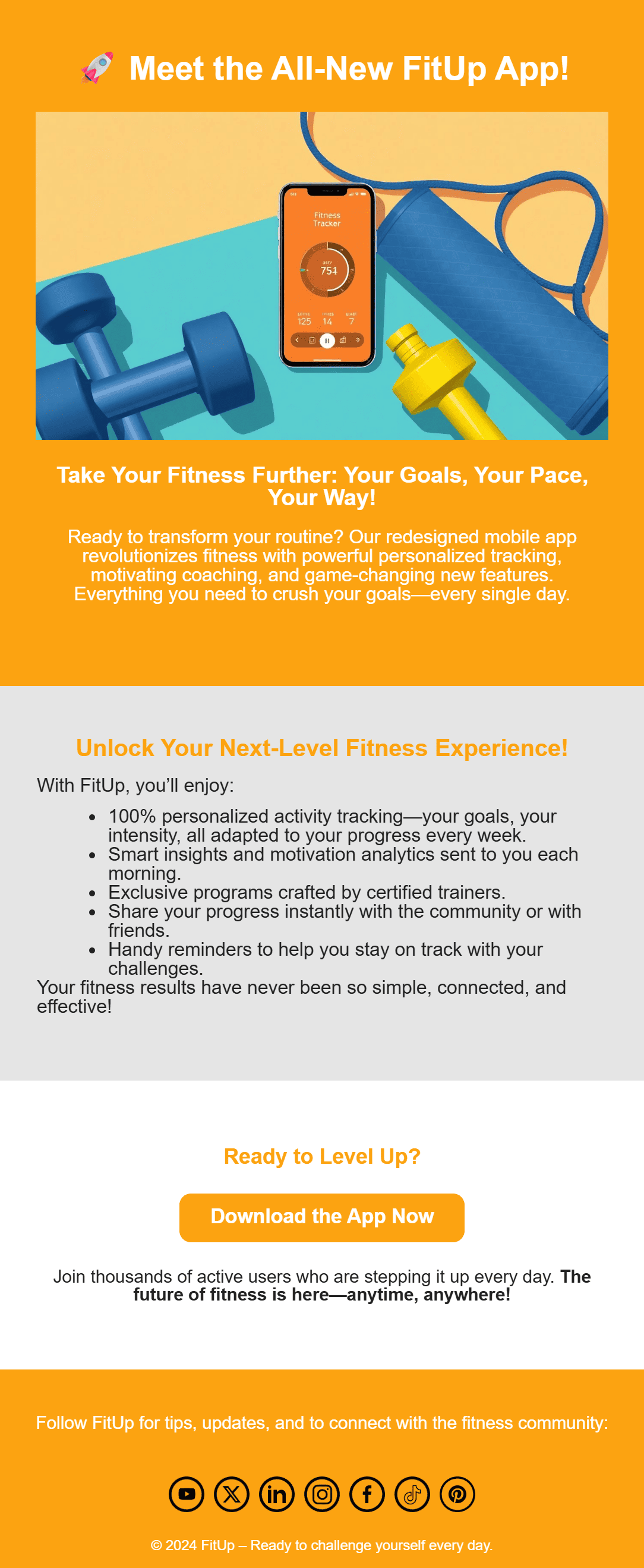





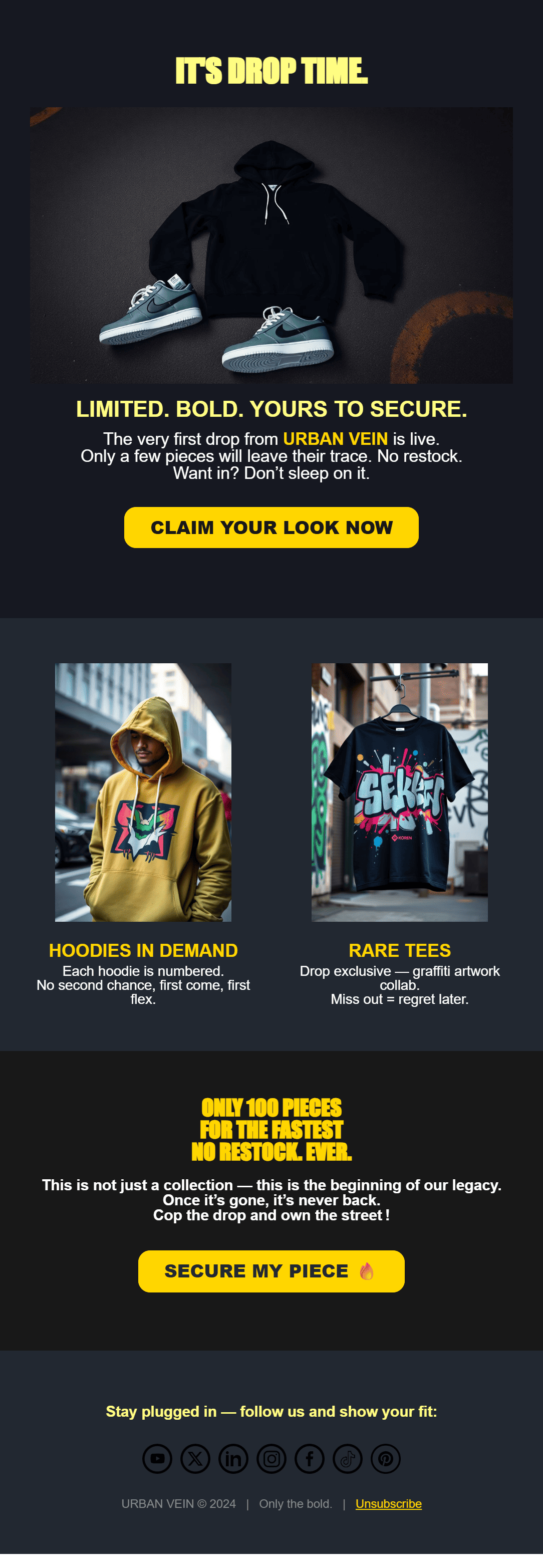
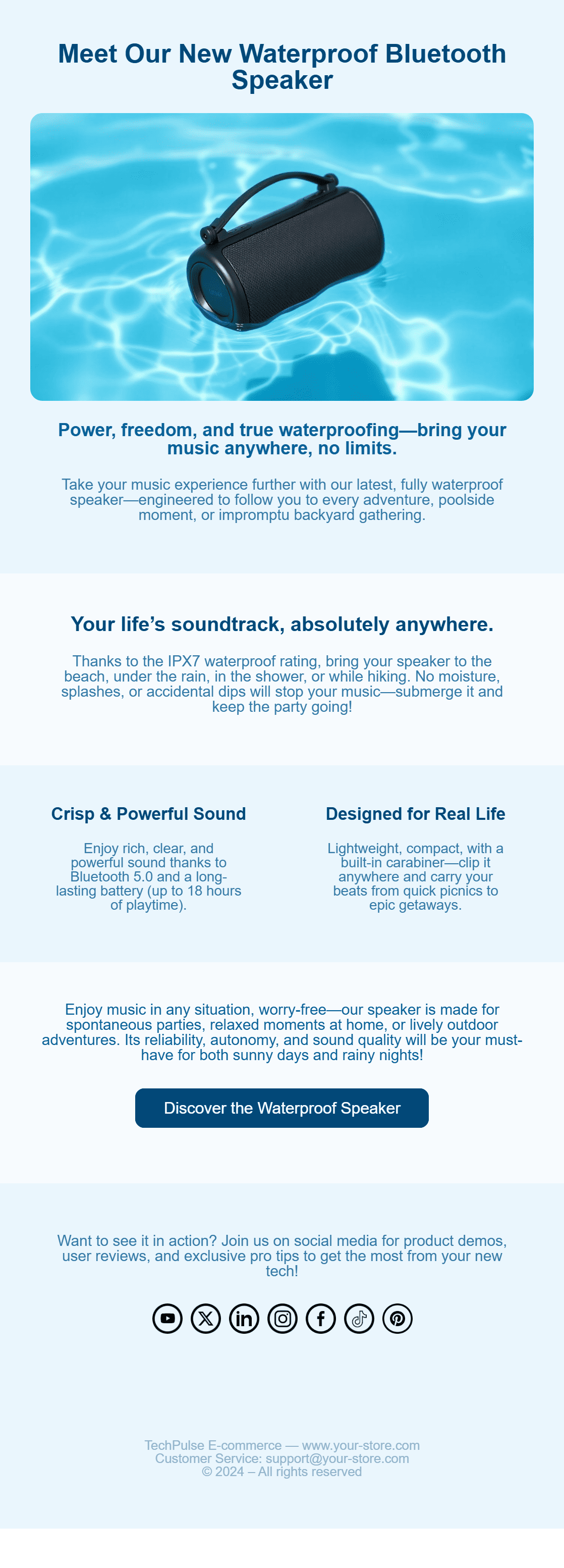








What is a launch announcement email?
A launch announcement email is the zero-to-one message that introduces a brand-new product, feature, or plan tier to your subscribers. Its goal is two-fold: (1) highlight one undeniable benefit your audience has been waiting for, and (2) channel the initial excitement into a measurable action (sign-up, upgrade, or wait-list join). Think of it as the digital ribbon-cutting ceremony that turns passive awareness into active adoption.
Why launch emails matter
Instant attention spike:
Inbox data from Litmus (2024) shows subjects containing “new” or “just launched” boost open rates by 46 % compared with regular newsletters.
Network effects at low cost:
Early adopters often tweet, post, or forward the email, turning your list into a micro-influencer army without paid spend.
Real-time segmentation insight:
Click-heatmaps reveal exactly which benefits or pricing tiers resonate, giving you a *data-driven* roadmap for follow-up nurture flows and ad messaging.
Early momentum = long tail:
The faster your launch email converts, the more likely your product is to trend on Product Hunt, Reddit, or Hacker News within 48h of release.
How to do it in 5 easy steps
- 1
T-3-5 days: Send a curiosity teaser with a single-line promise and a blurred screenshot GIF.
- 2
Launch day: Embed a 20-second demo GIF or Loom video *above the fold* so subscribers grasp value before reading a word.
- 3
Headline the #1 benefit: Use a bold pull-quote such as “Cut reporting time by 60 % in one click.”
- 4
Add a friction-free CTA: One primary button to your landing page or in-app upgrade, plus a plain-text URL for inboxes that block images.
- 5
T + 48 h: Follow up with fresh social proof (tweet threads, early user quotes) and a gentle nudge for those who clicked but didn’t convert.
Best Practices
1. Tell a hero’s journey
Open with the user’s current struggle, agitate the pain, then unveil your product as the guide leading them to success. Close on the aspirational outcome.
What's good: The classic Problem → Agitation → Solution narrative converts **18 % better** than feature lists in SaaS (CXL study, 2023).
Tip: Write in second person (“you”) and keep paragraphs ≤ 60 characters wide for scannability.
2. Add social proof instantly
Seed credibility with 2-3 micro-testimonials from beta users, tweet screenshots, or G2 snippets directly under the hero section.
What's good: Placing proof near the CTA lifts click-through by **7 %** on average (VWO, 2024).
Tip: If you’re new on G2, embed a single high-rating badge rather than the full grid to avoid clutter.
3. Reward first movers
Scarcity fuels momentum. Offer early-bird pricing, lifetime deals, or limited-edition swag to the first cohort.
What's good: Example: “The first 500 founders lock in 20 % off for life.” This doubled MRR for a SaaS client in Q1 2025.
Tip: Visualise urgency with a slim progress bar or countdown timer; seeing only 127 slots left nudges fence-sitters to act.
4. Leverage product-led storytelling
Instead of listing features, walk the user through a real use case or before/after scenario.
What's good: Example: ‘Before {{product}}, reporting took 4 hours. Now it’s 4 minutes.’
Tip: Use a GIF or short video to show a real flow, especially effective in technical tools or workflow automation.
10 High-Converting Welcome Email Subject Lines
- It’s here: meet {{product_name}} 🚀
- Launch day! Exclusive early access inside
- Now live: {{product_name}}
- You asked, we built it
- Say hello to your new superpower
- Sneak peek: unlock the future of {{category}}
- Ready to upgrade the way you work?
- Big news from {{company}}
- The wait is over
- Be the first to try it
Frequently asked questions
Should I build hype pre-launch?
Absolutely. Sending a curiosity teaser **3 days before** increases launch-day opens by **34 %** and primes social chatter.
How many images are too many?
Keep it lean. One hero GIF plus two static shots hits the sweet spot, maintaining total load times under **2 seconds** on mobile.
Plain text or HTML?
HTML drives higher CTR for launches, thanks to visuals and buttons. But send a short plain-text reply-able note from the founder a few hours later, it humanises the brand and captures qualitative feedback.
Should I launch to everyone at once?
Staggered launches work better. Start with power users or trial accounts to gather feedback, then widen to your full base in 24–48h.
Can I reuse the same email for Product Hunt + email list?
No, slightly adapt. Email should explain context, whereas Product Hunt focuses more on product walkthroughs and visuals. Tailor CTA wording and tone accordingly.
How do I measure launch email success?
Beyond opens and clicks, track conversions to trials, upgrades, or demo requests. Monitor bounce rate on the landing page and replies to plain-text follow-ups.
